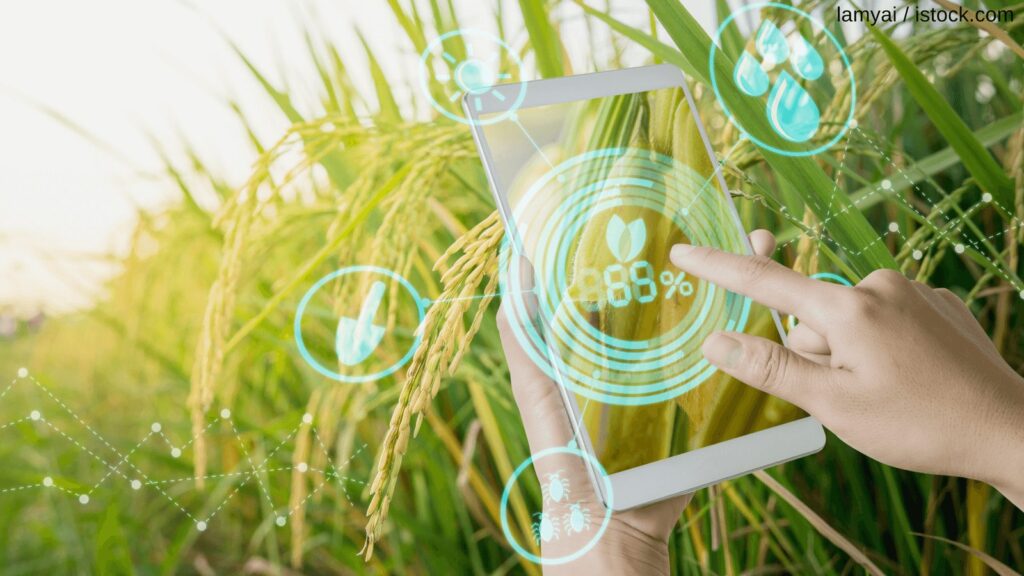AGRICULTURE:
It is the art of cultivating crops, plants, and other desired goods. The goods other than food obtained from agriculture include fuels (biodiesel, methane, etc.), fibers (silk, wool cotton, etc.), some drugs like cocaine, marijuana; these products are often called non-food products of agriculture.
EVOLUTION IN AGRICULTURE:
like all other aspects of life agriculture too has undergone a wide range of changes creating a pathway towards an advanced system of approaches and technologies to bring ease and improvement in the process as well as products of agriculture respectively. The evolution in agriculture is based on the innovation of traditional farming techniques. The incorporation of technology in earlier farming ways and agricultural practices sure took time but helped the field to adapt to a whole new progressive system of agricultural technology.
Neolithic or agricultural evolution:
is considered as the first instance of revolution in human history of agriculture and is known to have begun about 12000 years ago when people adapted from being the hunter-gatherers (nomadic groups who migrate in search of food and wild crops) to settling down in one place and grow their crops and domesticate animals. Flax, peas, lentils, and cereals like wheat and barley were among the first crops cultivated in the Neolithic era of farming. Neolithic revolution triggered a change in the human lifestyle enabling people to develop localized communities, civilizations, and cities eventually. Fertile Crescent; the area of Western Asia is considered as the birthplace of agriculture and is often called the cradle of civilization. This area comprises territories (like Turkey, Iraq, and Syria, etc.) where humans started the cultivation of crops and breeding of animals.
The use of metal tools like plows and iron blades for farming marked the end Neolithic era. People invented a canal network system for regulating the flow of rivers by digging the ground and eventually creating an efficient irrigation system for protecting the crops from either being washed away by the overflow of river water or being dried to death due to low levels of water.
This era continued to grow during Bronze Age when new mechanical techniques were innovated for efficient farming whereas, in the Middle Ages dams, reservoirs, and water-raising machines were built as complex irrigation systems that greatly promoted the effectiveness and productivity of agriculture. Cross-breeding of animals and plants as well as a farming technique called ridge and furrow using the horses or oxen also flourished during this period. In the 16th century, strategies like harvesting large quantities of diverse crops on the same land and crop rotation modernized agricultural practices. 18th century is known to be the industrial revolution period of agriculture when large farming productivity enabled the employment of increased human labor in industries. Use of fertilizers and pesticides with the awareness of the chemical effect on human health and environment raised by the 20th century when heavy machinery use like tractors, reapers, etc.; also helped to increase the quantity and quality of products making them affordable and easily accessible.
TECHNOLOGY TO GROW CROPS:
Implementation of advanced technology in modern farming has immensely changed the concept of agriculture as compared to the decades older ones. Modernizing the farming practices and approaches improved the agricultural output and quality considerably.
Following are some of the uses of technology in agriculture
Crop or soil sensors:
Digital information provided by the sensors helps to achieve a high level of productivity. These sensors help the farmers to improve the crop’s condition by detecting the soil characteristics like pH or electrical conductivity, ripeness of the fruit, infection or diseases, etc. sensors also help the farmers to use the correct amount of fertilizers and pesticides on the field.
These sensors can also be connected to Wi-Fi to create a network that can notify the farmers about the crop’s condition
Robotic farms:
The robots can weed, hoe, and assist different areas of farming. Some robots can spray the calculated amount of chemicals on the field; some have GPS systems that help them navigate their way across the crops, some robots are built to pick the particular fruit or crop, etc.
Biotechnology;
Implementation of genetic engineering in agriculture has proven to increase food or drug production, the resistance of crops to the diseases or insects, and it also have enhanced the nutrient composition of the crops yields.
The benefits of technology in modern farming includes
- Less human labor
- Decreased use of chemicals and pesticides
- Increased productivity with lesser costs safety of the workers
- Reduced ecological and climatic impacts


Pingback: is 5g dangerous to your health ? | whatdigi.com
Pingback: how to transfer from android to iphone - whatdigi